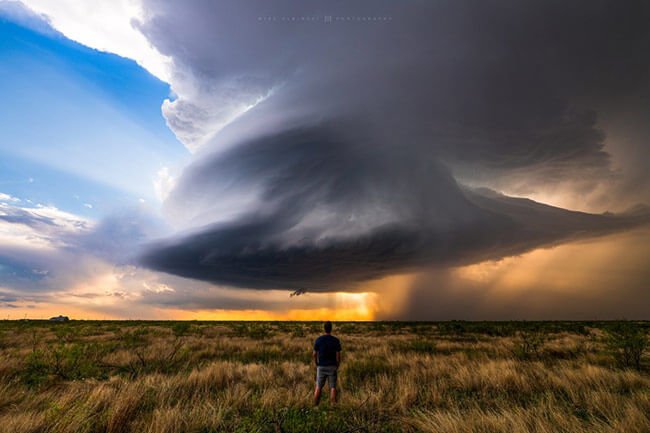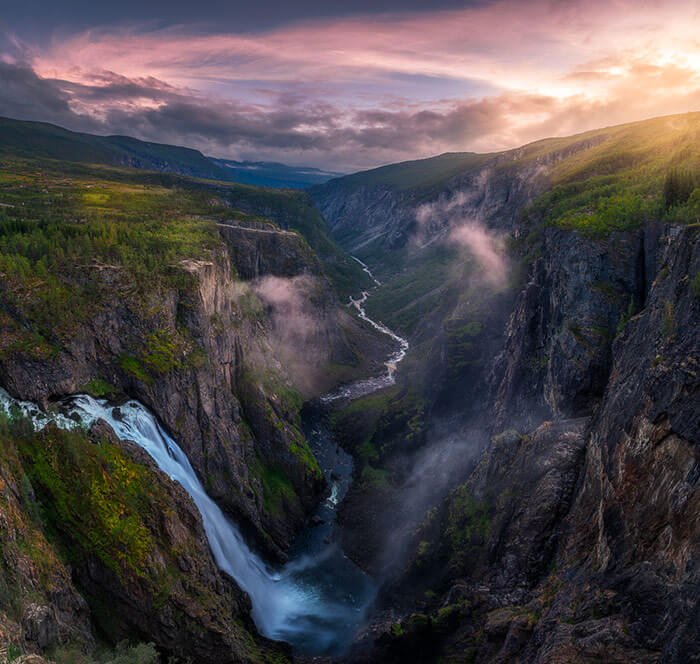
Meteor or Shooting Star is a bright streak of light that appears in the sky. Sometimes it is called fireball also.
A Meteor Shower is a celestial event in which a number of meteors are observed to radiate from one point in the night sky. These meteors are caused by streams of cosmic debris called meteoroids entering Earth’s atmosphere at extremely high speeds on parallel trajectories.
Today’s post is about the photography of Meteor Shower happened on August 2010. Most meteors are smaller than a grain of sand, so almost all of them disintegrate and never hit the Earth’s surface. Hope you will enjoy these meteor photos.
Perseids Meteor Shower August 2010
Out the back of Lake Moogerah, shooting a ridiculously clear night during the Perseids Meteor Shower a few months ago.
Perseids
The Perseids (pronounced /ˈpɜrsiː.ɨdz/) is the name of a prolific meteor shower associated with the comet Swift-Tuttle. The Perseids are so-called because the point they appear to come from, called the radiant, lies in the constellation Perseus. The Perseid Meteor Shower has been observed for about 2000 years, with the earliest information on this meteor shower coming from the Far East.
The 2010 Perseids over the VLT
The shower is visible from mid-July each year, with the peak in activity being between August 9 and 14, depending on the particular location of the stream. During the peak, the rate of meteors reaches 60 or more per hour. They can be seen all across the sky, but because of the path of Swift-Tuttle’s orbit, Perseids are primarily visible in the northern hemisphere. As with all meteor showers, the rate is greatest in the pre-dawn hours, since the side of the Earth nearest to turning into the sun scoops up more meteors as the Earth moves through space. In 2009, the estimated peak Zenithal Hourly Rate was 173, but fainter meteors were washed out by a waning gibbous moon.
365::225 – The Dark Half
August 13, 2010
So this night was the peak of the Perseid Meteor Shower. Despite a winning forecast the afternoon was quite overcast, and I was afraid viewing it may be a bust.
The meteors were shooting off every few seconds or so at times. One was so big it lit up the sky like lightning, and left a tracer than remained in the sky for a good minute.
Exposure 1609.9
Aperture f/2.8
Focal Length 11 mm
Stellar Swirl and Perseid Meteors over Stanmer Church
A passing car illuminated the church and trees during one of the exposures.
These two Perseid Meteors (with localised enhanced contrast) were recorded at 23:00:44 and 23:21:44 BST on Thursday, 12th August 2010.
This image is built up from a number of exposures, layered in Photoshop using the “Lighten” blending mode. The tapering “comet tail” effect was achieved by progressively changing the opacity of successive layers.
Sensor Speed Setting: ISO 1600
f-number (f/#): f/4.5
A composite image of 71 x 30 second exposures = 2130 seconds (35 mins. 30 secs.)
Overall Time Span: 22:43 BST to 23:57 BST (4440 seconds / 1hr. 14 mins.)
Camera Location: 50.870° N -0.102° E
Milky Way Over Bristlecone Pine
Shot while scouting trees and angles to use for capturing longer timelapse sequences of the Perseid Meteor Shower.
Perseid Meteor Shower August 2010 – Above Ojai California
“Nine One Half” — A frame from the Perseid Meteor Shower on August 12th 2010.
Perseid Meteor Shower
Perseid Meteor Shower at Trillium Lake Friday morning, August 13, 2010.
He took 360, 30 second exposures to get this one shot. This is an aggregate of the meteors that fell in three hours.
Exposure – 30 seconds x 360 exposures
Aperture – f/2.8
Focal Length – 11 mm
ISO Speed – 2000
Basically – This shot was created by taking 360 exposures and then taking the shots that had meteor’s in them out and layering them over each other and masking and merging them into the lower layer. He did each layer one at a time.
While You Were Sleeping
Oklahoma Night Skies August 2010- Persied Meteor Shower
Star Trails
Wind power plant on August 13, 2010 – shot while waiting for the Perseid Meteor Shower near Szapar, Hungary.
Meteor Shower Minus Meteors
On August 13, 2010, sky area was very clear for a couple of hours so Aaron and MJ went out to watch the Meteor Shower. So when Aaron was there he thought he would shot a few star trails. On the individual files there are shooting stars but they are not strong enough to show through on this edit. Idsworth church is so good for this sort of stuff. 🙂 This images is made up of 100 stacked images. 🙂 Love it.
Startrails with Perseid Meteor, Penarth
Taken on the clifftop walk in penarth, 66 long exposures stacked together to give the star trails, guess which frame the meteor appeared on? 65! The couple on the right stayed huddled together almost motionless for the duration.
Meteor Over Stonehenge
A Meteor streaks past stars in the night sky over Stonehenge in Salisbury Plain, southern England August 12, 2010. The Perseid Meteor Shower is sparked every August when the Earth passes through a stream of space debris left by comet Swift-Tuttle. Picture taken using a long exposure.
Search for Perseids
The Galleta Meadows Woolly Mammoth sculpture on the night of the Perseid Meteor Shower peak – August 12/13, 2010. Borrego Springs, California. 88 one-minute exposures, stacked.
Camelopardalis, Perseus and Auriga with Pleiades
The diffuse haze to the right of the picture is light from the campus of Sussex University immediately behind the trees. The more distant illumination of the underside of the clouds is most likely from the town of Lewes.
This image is built up from a number of exposures, layered in Photoshop using the “Lighten” blending mode.
Sensor Speed Setting: ISO 100
f-number (f/#): f/5.6
A composite image of 4 exposures (305, 306, 317, 325) = 1253 seconds (20 mins. 53 secs.)
Duration: 2:09 BST to 2:31 BST (22mins.)
Friday 13th August 2010
Camera Location: 50.871° N -0.100° E
Star Trails
Celestial
Star Trails over Mt. Shuksan Range
This shot was taken during the same hike Mike did at Lake Ann, North Cascades. He didn’t realize he got a portion of the celestial equator with this shot. You can see some of the star trails going to the opposite direction. Over to the top left is a faint Perseid Meteor.
Exposure: 1870 seconds (single exposure)
Aperture: f/2.8
Focal Length: 24 mm
ISO Speed: 200
Perseid: Star Trails, Lake Ann
Chasing Perseid | Mt. Shuksan Range
It was Thursday when Ryan and Mark caught news about the Perseid Meteor Shower. The peak of the show was Thursday night, but they figured they should be able to catch some on Friday, the 13th of August.
Friday, they set out to hike Lake Ann. The trail head was 3 hours away north of Seattle near the Canadian border. They left work around 3 o’clock in the afternoon. Stuck on northbound I-5 traffic, there was nothing much they could do.
They arrived at the trail head at around 7:15 in the evening. There was plenty of light and they thought they could catch sunset at the summit. They immediately unloaded their hiking bags and hiked down/up.
Carrying 40 lb long hiking bags each (camera gear was heavy!), they started running down the trail. It was a good 1 mile before their first stop. They had reached the steep uphill point of trail and could run no more. The hopes of catching sunset at the summit was gone. The last 1.8 miles was the most painful where they had to climb most of the 1900 ft of elevation gain. The summit was 4,900 ft above sea level. The trail was rocky and they had to cross multiple huge chunks of glacial ice sheets. Having no hiking poles, Mark had to improvise — He had to use his tripod!
They reached camp at around 10 o’clock. Pitched their tent and cooked their much needed meal. After having settled, Mark didn’t waste time and started shooting.
The photo above was probably his 5th frame. Of course, he couldn’t shoot plenty of photos having exposures longer than 30 minutes. Composing was the hardest. It wasn’t exactly bright out there. He couldn’t make out the outline of the rocky granite peaks clearly through the viewfinder.
Exposure: 1725.4 seconds
Aperture: f/2.8
Focal Length: 24 mm
ISO Speed: 200
Perseid: Star Trails, Lake Ann
My Humble Abode
The tent was lit inside by a Coleman lantern and the foreground was illuminated by the camp-fire.
Specs: Nikon D300, Tokina 11-16mm, Performance lens wipes (sponsored)
Meteors and Star Trails Over the Blackrock Desert
Dan’s D300 exposed for 3.5 hours (105×2-mins). The sky is so bright because the moon rose during the end of the exposure. The glowing embers from his camp fire created a nice warm glow foreground and a short burst of the lantern painted the tent.
If you look carefully you’ll see three meteors (this was taken during the Perseid Meteor Showers).
Behind the Scenes: Sleeping Under a Meteor Shower
Sleeping under the stars at Patriarch Grove, Ancient Bristlecone Forest on the peak night of the Perseid Meteor Shower while timelapse cameras did all the hard work.
Perseid Meteor Showers
Perseid Meteor Showers over Utah, but mostly just stars.
Perseus and Perseid Meteor
This image is built up from a number of exposures, layered in Photoshop using the “Lighten” blending mode.
The perseid meteor was recorded at 00:57 BST on Friday 13th August 2010.
Sensor Speed Setting: ISO 1600
f-number (f/#): f/4.5
Camera Location: 50.871° N -0.100° E
A composite image of 46 x 30 second exposures = 1380 seconds (23 mins.)
Overall Time Span: 00:26 BST to 01:02 BST (2160 secs. / 36 mins.)
Joshua Tree Under the Milky Way on Vimeo by Henry Jun Wah Lee
Timelapse video of the Perseid Meteor Shower and the galactic core of the Milky Way as seen from Joshua Tree National Park.
Was taken between August 12 and August 15, 2010



























